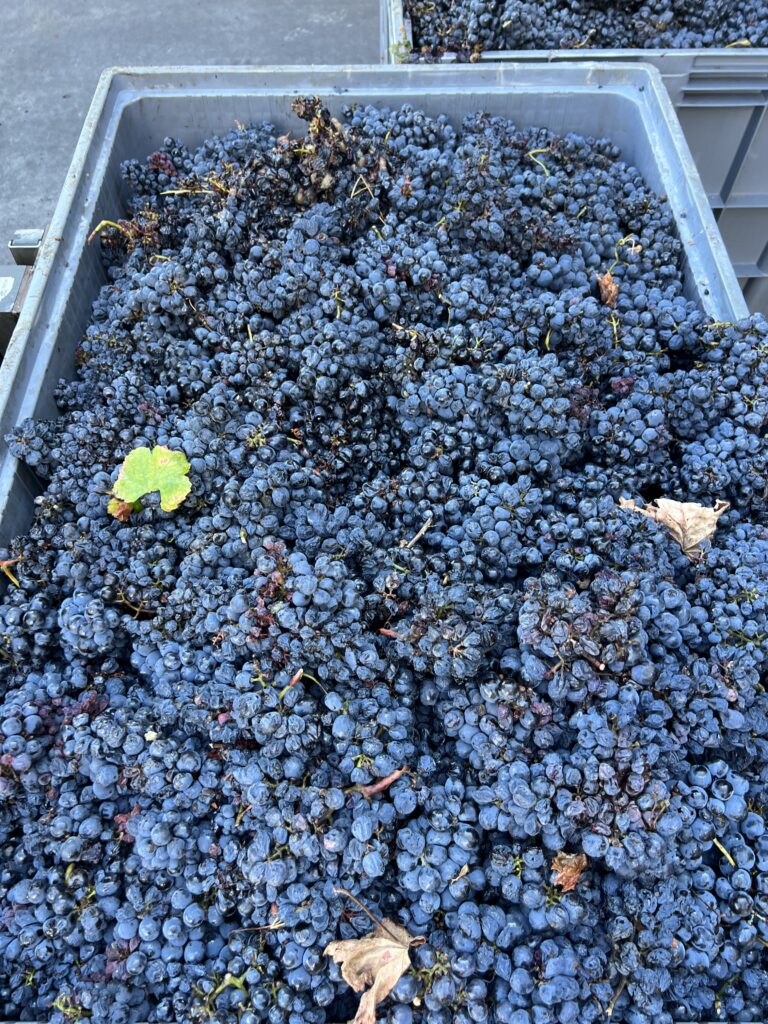
Port wine is as delicious as it is complex! If you like sweet wine (even if you don’t yet), stick around for this simple guide to Port wine! In this comprehensive guide to Port wine, we’re embarking on a delightful journey and demystifying the world of Port wine. This fortified wine hails from the picturesque Douro Valley in Portugal and offers a host of styles for wine lovers to enjoy.
What is Port
Before we explore the different styles of Port wine, let’s quickly demystify what Port actually is.
Port is a fortified wine, which means it’s made by adding grape spirit (brandy) to the fermenting grape juice. This fortification process increases the alcohol level, creating an unfriendly environment for yeast and therefore stopping the fermentation. The result is a wine with leftover residual sugar – a sweet fortified wine.
How Port Wine is Made: A Step-by-Step Guide
Making Port wine is a labor of love and tradition. Port wine is a complex and fascinating beverage, and understanding how it’s made is essential to appreciating its rich flavors. In this section, we’ll walk you through a step-by-step guide to Port wine production.

Grapes
The magic begins in the vineyard. The grapes used in Port production are predominantly indigenous varieties like Touriga Nacional, Touriga Franca, and Tinta Roriz. These grapes are grown on steep terraced vineyards along the Douro River, where the hot, dry summers and cool, wet winters create the perfect conditions.
Harvest
Due to the steep incline of the vineyards, the majority of grapes are handpicked. This ensures only the best fruit makes its way into the wine.
Crushing and Fermentation
After destemming, the grapes are crushed to extract the juice. Fermentation begins naturally with the grapes’ indigenous yeasts. Traditionally, grapes were stomped in granite stone lagares at the wineries to extract tannin and color from the grape skins during the fermentation.
While some premium producers still use the age-old tradition of foot-stomping, many use machines that can mimic the process to make it faster and more cost-effective.
Fortification
When the wine reaches a certain sweetness level usually after about 48 hours, the wine is separated from the skins, and grape spirits are added to the must to halt fermentation. This step boosts the alcohol content and preserves the wine’s natural sugars.

Aging
Port wine ages in various types of neutral oak barrels for a minimum of two years. Depending on the style, it can mature for much longer. The aging process in oak contributes to the wine’s complexity and flavor profile.
That concludes our step-by-step guide to making Port wine. Now, let’s move on to explore the different styles of this captivating wine in our comprehensive guide to Port wine.
Ruby Port: The Youthful Joy
This is the perfect introduction to Port wines. Ruby Port is known for its vibrant, ruby-red color and fruity, youthful flavors. It spends about 2-3 years aging in oak, which helps preserve its fresh fruitiness. The oak is not brand new, so it does not give the wine the flavors of vanilla and spice that you might expect from wine aged in new oak. Ruby Ports have flavors of cherries, berries, and a touch of spice in this delightful wine.
Tawny Port: The Aged Elegance
Tawny Port is like a fine, aged whiskey of the wine world. It’s known for its amber color and complex, nutty flavors. Tawny Port is aged in small oak casks for many years, often over a decade. During this time, it undergoes a slow oxidation process, which gives the wine flavors of caramel, dried fruits, and nuts.
You might notice some age indications on Tawny Port, for example, 10, 20, 30 years. This date is an average of the wine in the bottle and does not mean all the wine is 30 years old. Tawny Port really showcases the art of blending! When you sip a glass of Tawny, you’re experiencing a piece of history in every drop.
Late Bottled Vintage (LBV) Port: The Best on a Budget
LBV Port is made from a single vintage (all the grapes are from the year stated on the bottle) and is aged 4-5 years in oak before being bottled. The result is a wine that’s accessible in terms of price, and the aging has been done for you, so it is ready to drink. LBV offers a taste of vintage quality without the wait. LBV Port often exhibits intense fruit flavors and a velvety texture.
Vintage Port: The Crown Jewel
Vintage Port is the grand dame of them all. It’s made from the finest grapes of the best vintages and is only produced in exceptional years. This wine is bottled young, typically after just two years in oak, and continues to evolve and improve in the bottle for decades.
The long aging means the Vintage Port will have sediment or floating particles in the bottle. It’s a natural reaction that happens slowly over time. Use a decanter to separate the wine from the sediment.
Vintage Port is a powerful, full-bodied wine bursting with dark fruits, floral notes, and incredible aging potential. It’s the wine collectors dream about.
White Port: The Refreshing Surprise
While red Ports dominate the scene, don’t overlook White Port. It’s made from white grape varieties and ranges from dry to sweet. White Ports are often enjoyed as an aperitif and are known for their refreshing citrus and tropical fruit flavors.
White Port is used to make the classic Porto Tonico, a simple delicious cocktail of white Port and tonic water with lemon and mint garnish.

When to Enjoy Port
Traditionally, Port has been enjoyed as an aperitif after dinner; it’s perfect with a cheese course and desserts with fruit, caramel, and chocolate.
It is typically served chilled in 3oz pours in a small port glass. Don’t make a fuss about glassware, though. Don’t let not having the exact glass stop you from exploring the magic of port.
Conclusion
There you have it, a simple guide to Port Wine! The world of Port wine is a rich tapestry of styles and flavors, from the mature elegance of Tawny to the youthful exuberance of Ruby. You’re now ready to go out and explore the many styles of Port, and you’ll have a deeper appreciation for the craftsmanship and tradition that went into creating this historic wine. Cheers to the wonderful world of Port wine!
